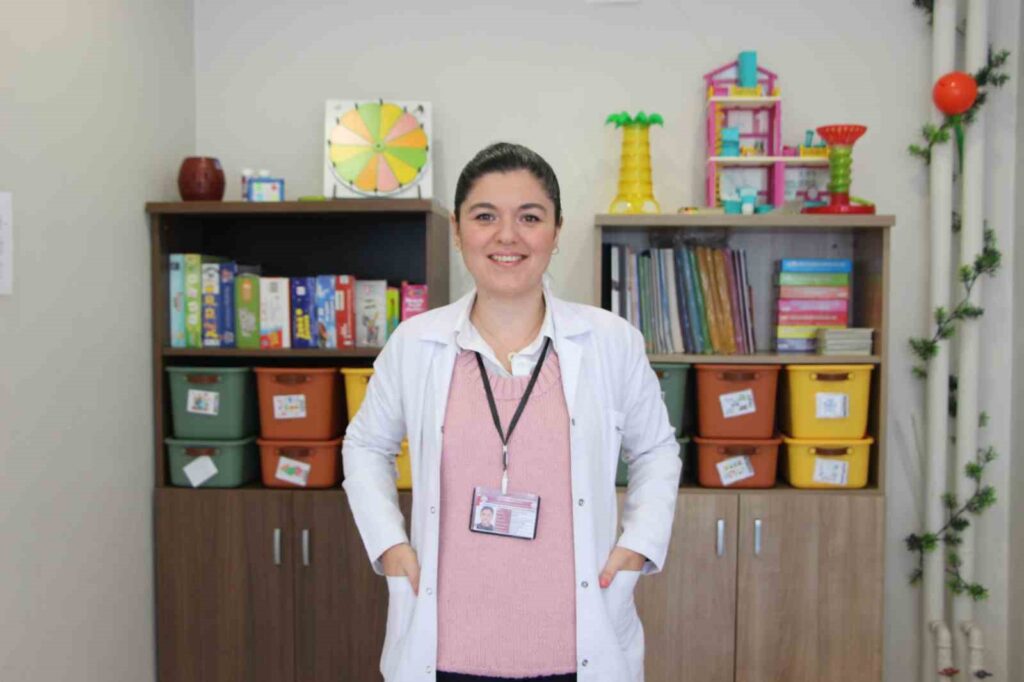Sahin: “1 in 20 children is faced with stuttering.”
It was stated that stuttering is found in two percent of adults and five percent of children worldwide. Highlighting October 22 as World Stuttering Day, Melda Nisan Şahin, a specialist speech and language therapist at Mavi Special Education and Rehabilitation Center …

It has been reported that stuttering is observed in two percent of adults and five percent of children worldwide. Highlighting October 22nd as World Stuttering Day, Melda Nisan Şahin, a Specialist Speech and Language Therapist at Mavi Special Education and Rehabilitation Center, stated that one in every 20 children faces stuttering. Noting that developmental stuttering is more commonly seen, Şahin said, “Stuttering can be divided into developmental and acquired stuttering. We see very little acquired stuttering in society; the prevalence rate is very low. Developmental stuttering is seen more frequently. Developmental stuttering starts between the ages of 2-4, with five percent of children experiencing this condition. In the six to twelve-month period, there is a spontaneous recovery situation for 85-90% of those who stutter from the moment it first appears. In later stages, this situation can become permanent. There are various risk factors for it to become permanent. For example, being a male child, having a family history of stuttering, linguistic factors, psychogenic and environmental factors unfortunately pose risks for this situation to become permanent.”
“Stuttering is a type of disorder that needs to be evaluated multidimensionally”
Stating that stuttering arises from multidimensional causes, Şahin noted, “In society, we can receive feedback like ‘stuttering started after being scared of a dog’ or ‘after seeing something in a dream.’ Stuttering is a type of disorder that needs to be evaluated multidimensionally. Stuttering arises from multidimensional causes. Genetic, neurological, motor, cognitive, linguistic, and emotional factors accompany it and cause it to appear. Fear can only be considered a triggering factor for stuttering. In fact, there is an existing ground for stuttering, but fear can be a reason for it to manifest.”
Expressing that stuttering generally appears at a rate of one percent in the world, Şahin stated, “Stuttering is seen at a rate of one percent worldwide. Of these, five percent are generally seen in children. In adults, stuttering is observed at a rate of one to two percent. Therefore, we see it more in children. In fact, most children experience a stuttering condition, which we call ‘disfluency,’ at some point in their lives. During the language learning process, children may show stuttering-like behaviors through many repetitions while acquiring language.”
“There is no possible medication treatment for stuttering”
Stating that there is no possible medication treatment for stuttering, Şahin said, “There is no possible medication treatment for stuttering. If there are accompanying psychological conditions, we can sometimes work together with clinical psychologists. There is only a speech and language therapy process. Stuttering therapies require active participation and motivation. The client continues this process by setting joint goals with the therapist. It is not possible to specify any duration. The biggest problem in stuttering is related to continuing to speak and not continuing communication. When the individual does not change their existing habits and when the environment does not support them much, they can reach the point of cutting off communication when they finish their sentence or when they become a subject of mockery. What is most important for us is that stuttering individuals continue to try to express themselves.”
“It is important to pay attention to what you say, not how you say it”
Şahin emphasized the importance of paying attention to what individuals say, stating, “The aspect of being a professional is a situation where stuttering individuals panic and are very anxious. We have clients who experience anxiety related to speaking in front of the camera in professions that require speech, such as journalism or anchoring. As long as we control speech, no problems arise. It is important to pay attention to what you say, not how you say it. Even if we stutter, we can convey news very nicely to the person in front of us. What we say is much more important than how we say it.”
“We apply techniques aimed at increasing fluency”
Describing the methods used in therapy, Şahin stated, “In therapy, we apply some techniques aimed at shaping fluency and increasing the fluency of speech. In addition, we implement desensitization and exposure studies. Our goal in desensitization and exposure studies is for the individual not to disconnect from communication and to communicate very comfortably with the people in front of them. In our techniques, our goal is to help them express themselves more comfortably and fluently if they belong to a profession that involves making presentations or being in front of the camera.”







